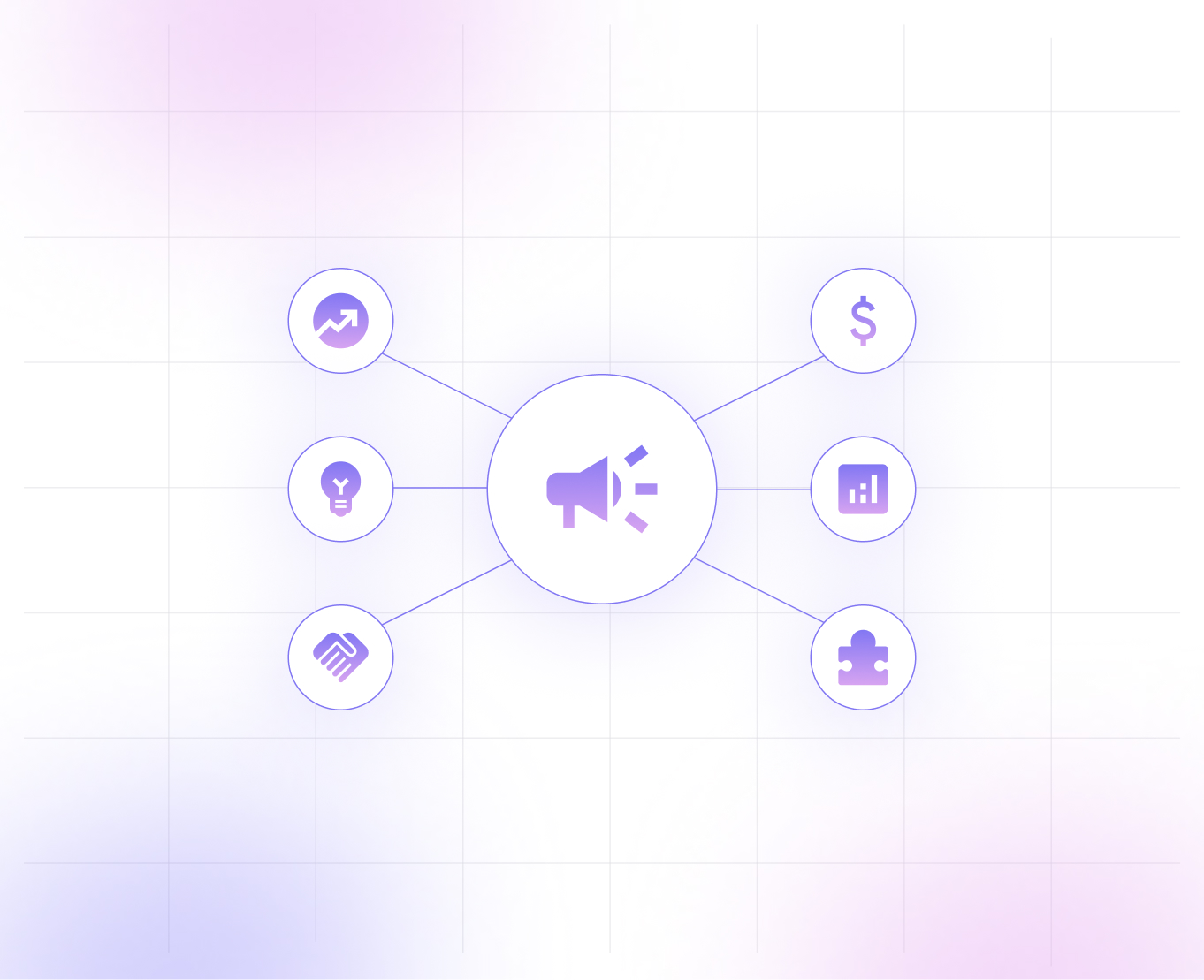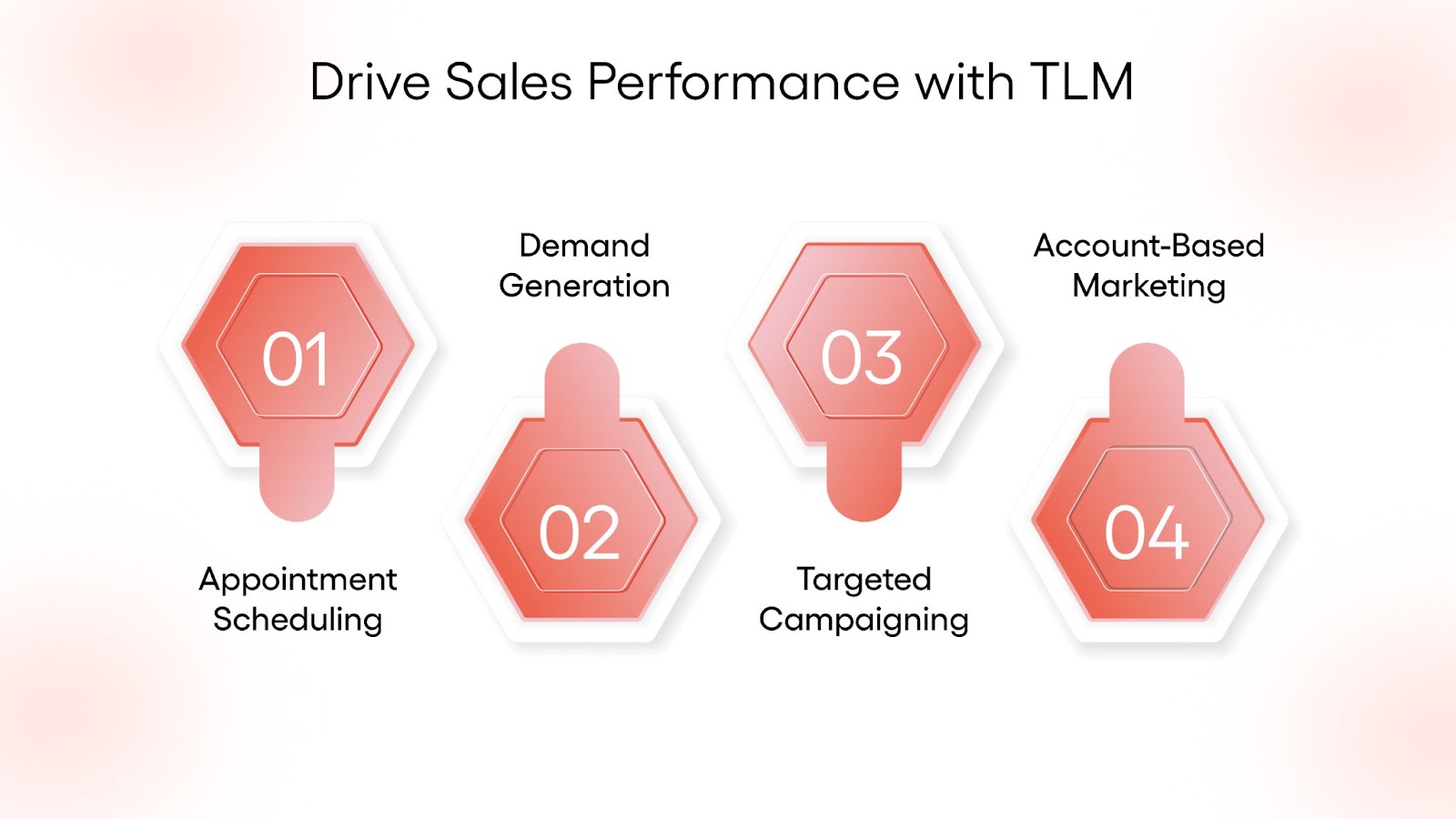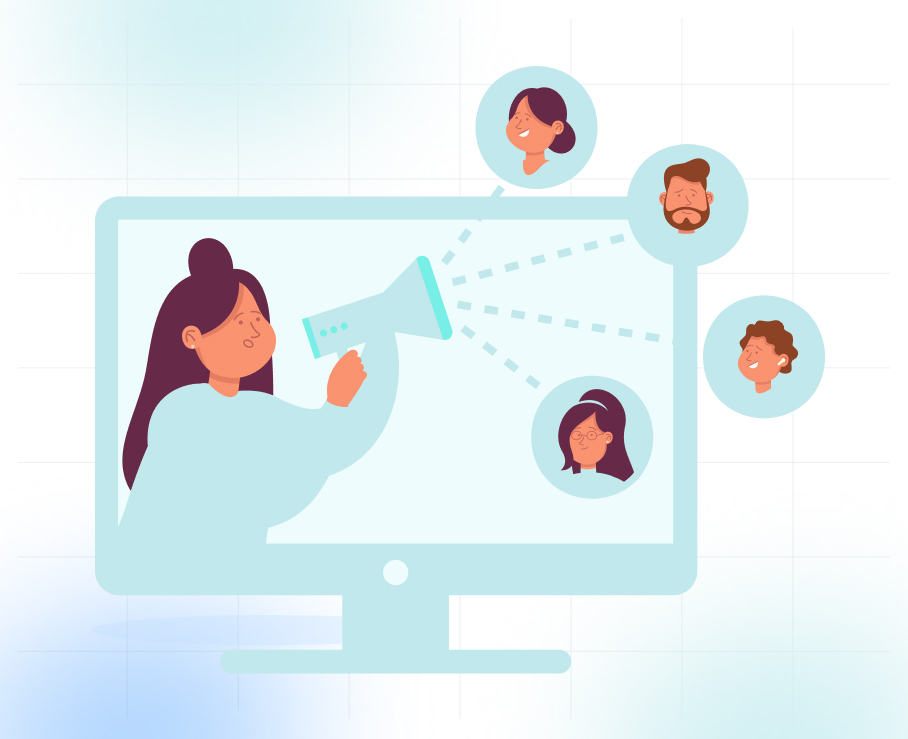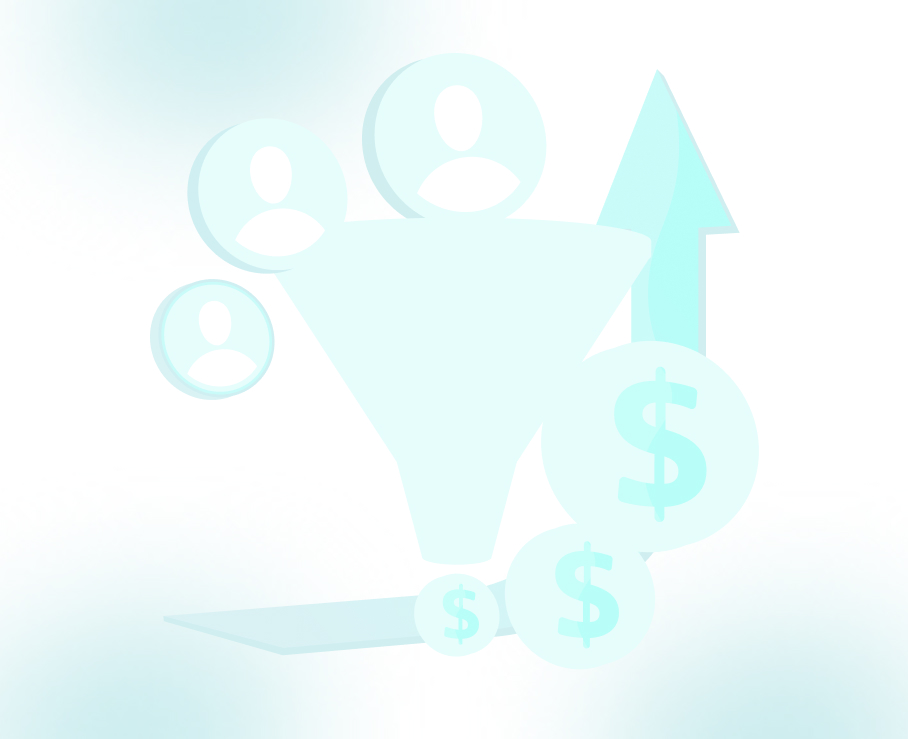
Smart Sales Tactics for 2025: How to Drive Revenue the Right Way

Sales performance in 2025 hinges less on persuasion and more on precision. According to recent data, 28% of sales professionals cite lengthy sales processes as the main reason prospects abandon deals, while over half (53%) say it’s harder to sell now than a year ago. Buyers are more informed, cautious, and deliberate, and traditional sales tactics no longer cut through.
What’s changed? The challenge isn’t just competition or pricing, it’s how sellers manage timing, relevance, and buyer fatigue. The average sales cycle has grown longer, and pushing harder often leads to drop-offs rather than conversions. What makes a difference is operational clarity: knowing how to engage consistently, without crowding the buyer.
Improving sales performance today means building smarter, buyer-aligned systems:
- Prioritizing high-intent leads based on real-time behavior
- Equipping reps with flexible, modular playbooks
- Syncing outreach with where the buyer is in their journey
Throughout this process, subtle, well-timed touchpoints help keep momentum alive.
Email in particular stands out for its staying power, delivering an average return of $36 for every $1 spent. Still, it’s most effective when used in tandem with other low-friction follow-ups that meet the buyer where they are.
This guide unpacks tactical, research-backed strategies to enhance your sales performance in 2025, whether you're leading a team or refining your approach. Let’s break down what actually works.
Key Takeaways
- Precision > Persuasion: Buyers are informed and cautious. Pushy sales tactics backfire; contextual, buyer-aligned engagement wins.
- Focus on Fit: Prioritize high-intent leads over volume. Relevance beats reach.
- Modernize the Funnel: Map processes to how buyers actually behave, not how you wish they did.
- Equip Reps to Adapt: Avoid rigid scripts. Provide reps with clear frameworks, well-crafted enablement materials, and the autonomy to advance deals.
- Use Email Strategically: Email still delivers top ROI, but only when segmented, personalized, and tied to real signals.
- Think Beyond the Close: Sales performance depends on post-sale visibility, feedback loops, and lead re-engagement.
- Fix What’s Broken, Fast: Use diagnostics to spot gaps in tools, training, messaging, or process.
- Don’t Go It Alone: Outsourcing to the right sales partner can fast-track results and free up internal bandwidth.
What Is Sales Performance?
Sales performance measures how effectively a team turns sales opportunities into revenue. It reflects both outcomes (like quota attainment and win rates) and the quality of execution across the sales cycle.
Strong sales performance means:
- Reaching revenue goals consistently
- Converting leads at a healthy rate
- Keeping the sales cycle efficient
- Closing deals that actually stick, not just inflate short-term numbers
It also highlights how well a team handles everyday challenges, slower decision-making, budget pushback, or shifting buyer priorities. Teams that perform well don’t just rely on top performers. They have solid systems in place, good data hygiene, clear qualification criteria, and shared visibility across roles.
Common metrics used to track performance include:
- Lead-to-close ratio
- Sales velocity (how quickly deals move through the pipeline)
- Average deal size
- Win/loss rates by segment
- Customer retention and expansion after the sale
Sales performance isn’t fixed. It changes when team structure changes, when the market shifts, or when the buyer journey evolves. That’s why improving it requires regular attention and ongoing adjustments in strategy, training, and execution.
Read: A Guide to Digitizing Your B2B Sales Process
Why You Need to Rethink Your Sales Strategy in 2025
The way people buy has changed faster than most sales teams have adapted. Buyer journeys are no longer linear; they’re scattered across channels, involve multiple decision-makers, and often restart midway through. Prospects take their time, do their own research, and only engage when they see real value. As a result, sales cycles have stretched, and trust, not information, is what earns attention and drives decisions.
Still, many teams rely on outdated sales strategies built for a different kind of buyer. They focus on volume over quality, static outreach over relevance, and scripts over conversations.
The result? High effort, low traction, and a growing disconnect between sellers and buyers.
Rethinking your sales strategy isn’t about chasing the latest trend or replacing one tool with another. It’s about reassessing how your team identifies, approaches, and moves opportunities forward:
- Are reps reaching out with context or just following templates?
- Are lead scores based on intent signals or outdated firmographics?
- Is there space for real conversations, or is every interaction a checkbox?
Just as buyers have become more discerning, sales teams need to become more responsive. This means tightening the gaps between marketing and sales, aligning messaging across touchpoints, and removing friction from how leads are handled, from first contact to follow-up.
Read: Understanding B2B Sales: Definitions, Examples, and Proven Strategies for Revenue Growth
Factors That Affect a Sales Team’s Performance

Sales performance depends on more than individual effort. It’s influenced by the systems, data, and support around the team. When deals stall or targets are missed, the root cause is often found in the structure, not just the skills. Below are the core factors that consistently shape how well a sales team performs.
- Lead Quality and Fit: Even top-performing reps struggle to close poor-fit leads. When marketing hands off vague or misaligned contacts, reps waste time chasing uninterested or unqualified buyers. Clear ICP (ideal customer profile) alignment, enriched lead data, and shared qualification criteria help ensure time is spent on leads that can convert, and stick.
- Sales Process Design: A rigid, one-size-fits-all sales process can quietly kill good deals. Many sales cycles break down not because of buyer disinterest but because the process demands steps that no longer match how people buy.
- Sales Cycle Length: Long sales cycles increase the chances of buyer fatigue, internal churn, or budget reallocation. If a team lacks strategies to create urgency or demonstrate early value, deals stall. High-performing teams monitor average cycle length and look for patterns: where do prospects lose steam, and how can that be prevented?
- Rep Skill and Autonomy: Sales success still depends heavily on individual judgment, especially in longer, consultative cycles. Teams that invest in practical training and allow reps to adapt their approach (within a framework) tend to outperform those locked into rigid scripts or over-reliant on automation.
- Coaching and Feedback Loops: Good coaching isn’t reactive; it’s structured, ongoing, and specific. Teams that regularly review calls, analyze win/loss reasons, and tailor coaching to patterns, not just metrics, see faster ramp times and better quota attainment. Effective feedback loops also help sales managers spot underperformance before it affects pipeline health.
- Cross-Functional Alignment When marketing, sales, product, and customer success teams work in silos, it shows confused messaging, misaligned promises, and frustrated buyers. High-performing sales orgs build in regular cross-functional syncs, align on customer personas, and close the loop between pipeline activity and post-sale outcomes.
- Tools That Support Speed (Not Just Tracking): A bloated sales tech stack can slow things down more than it helps. Reps don’t need more tools; they need the right ones.
- Compensation and Incentive Structures: Sales behavior follows incentives. If comp plans reward closed deals without considering churn, margin, or deal size, reps may overpromise or push weak-fit customers.
- Post-Sale Visibility: Sales teams often hand off after the deal closes, but that’s when long-term performance becomes visible. Teams that understand why customers churn, which promises break down, and what renewals look like, sell more responsibly. They also learn how to spot future red flags earlier in the funnel.
Sales performance is never shaped by one thing; it’s the result of how well people, processes, and systems align around what the buyer actually needs. Addressing these factors doesn’t just help teams hit targets; it builds a foundation where strong performance can be repeated, scaled, and sustained.
For teams stretched thin or entering new markets, outsourced sales support can also serve as a practical extension, filling capability gaps, shortening ramp time, and freeing internal reps to focus on strategic deals. When chosen wisely, it’s not a shortcut; it’s a smart lever for growth.
Read: Ultimate Lead Qualification Checklist: Convert More Sales in 2025
Smart Sales Tactics That Actually Improve Performance
Sales teams aren’t struggling because they’re underperforming; they’re struggling because the environment has changed, and the playbook hasn’t. Below are ten high-impact tactics that directly address the way modern B2B buyers evaluate, stall, or move on deals.
1. Use Targeted Email Campaigns to Warm Accounts Before Sales Steps In
Most sales conversations fail because the prospect isn’t warmed up enough. Email is still the best way to build intent before your SDRs reach out. But not all email is equal.
Focus on targeted nurture over mass blasts. Build campaigns around real signals (pricing page visits, webinar signups, content downloads). Segment messaging by account tier or buying stage. For strategic accounts, run account-based email sequences that show a deep understanding of their industry and challenges.
Don’t just sell in these emails. Share relevant customer stories and outcome-driven insights. This preps the buyer, creates context for your reps, and improves cold email reply rates dramatically.
2. Create Referral Loops Inside the Sales Process
Referrals don’t need to wait until after a deal is closed. The best time to ask is when the prospect is actively engaged and sees value, even during the trial or late-stage demo.
Build prompts into your sales process:
- After a demo, ask: “Is there anyone in your network facing a similar challenge?”
- During onboarding, share a referral incentive or co-marketing opportunity
- Post-conversion, offer a spotlight feature or exclusive perk for introductions
Well-structured referral asks can bring in leads that are pre-qualified and warm. And when paired with a strong buying experience, referrals compound trust fast. This isn’t about viral loops, it’s about turning satisfied buyers into lead sources without waiting 6 months.
3. Map Your Funnel Around Real Buyer Behavior
Most sales funnels are still built around what’s easy to measure: top-of-funnel leads, booked demos, closed deals. But buyers don’t move linearly. They stop, revisit, ghost, and resurface later.
What this looks like:
- Retarget website visitors who dropped off after the demo page or pricing view
- Automate email sequences for leads who paused mid-pipeline (not just MQLs)
- Track engagement beyond “open rates”—who’s watching your videos twice? Who’s revisiting the ROI calculator?
Rather than pushing buyers down a rigid path, create a flexible funnel that lets them re-enter when they’re ready and continue from where they left off.
Read: How Outsourced Sales Can Grow Your Business?
4. Blend Behavioral and Firmographic Lead Scoring
A common pitfall is treating a “perfect fit” account as a hot lead, regardless of behavior. The VP at the right company might not care. Meanwhile, a small business buyer who’s clicked 6 emails, downloaded 2 guides, and requested pricing often gets overlooked.
Fix that by building hybrid lead scoring models:
- Firmographics: industry, company size, role
- Behavior: time on pricing page, repeat sessions, email click depth, demo interactions
Weight real intent signals more heavily than job titles.
5. Make Your Sales Content Work Inside the Deal, Not Just Before It
You’re likely creating blogs, eBooks, and reports, but are your reps using them? Most sales content dies in marketing folders. Turn it into a deal-accelerating asset.
How to do it:
- Turn top content into objection-handling artifacts (“3 reasons security teams block SaaS deals, and how to solve them”)
- Create short, customized decks reps can edit before sending
- Use one-pagers to explain pricing, integrations, and timelines clearly
Equip reps to send content with commentary: “Thought this might address your CFO’s concerns.” Context makes content convert. If your best marketing doesn’t show up during sales conversations, it’s wasted.
Read: Effective Sales Email Templates for Outreach Success
6. Follow Up with Context, Not Calendar Nudges
Most follow-ups are lazy: “Just checking in.” Those three words kill more deals than silence. Follow-up is your chance to advance the conversation, not remind them it exists.
Build a better follow-up habit:
- Send new data or customer results relevant to the prospect’s use case
- Reference their timeline and add urgency: “You mentioned Q3 launch—want to sync before internal reviews begin?”
- Offer a workaround: “Would it help if we brought in your tech lead to walk through integration?”
Even better, plan the follow-up before the call ends: “I’ll send you X tomorrow that might help with Y.” Follow-ups should be additive. Not repetitive.
7. Show Value Early—Buyers Don’t Wait for Demos
Modern buyers are skeptical. They don’t have time for 30-minute discovery calls that lead to generic demos. They want a reason to believe, early.
Build quick value moments before the full pitch:
- Offer a mini-assessment or ROI snapshot based on their inputs
- Give access to a tool, template, or framework related to their role
- Run a short “reverse demo”—you show them how their problem would look solved, not your product in general
Value isn’t what you say, it’s what they experience. And the sooner they feel it, the more likely they are to stay in the funnel.
Read: 7 Steps to Mastering the Sales Process
8. Give Reps Autonomy Within Clear Guardrails
Top reps understand context; they know how to adapt messaging based on where the buyer is in their journey. But overly rigid templates and fixed cadences can limit their ability to respond with relevance and timing.
Instead of scripting every step, build flexible frameworks:
- Provide approved messaging tracks with space to personalize
- Let reps adjust sequences when a deal shows high intent
- Train on buyer scenarios, not just product specs or feature lists
Autonomy, when paired with structure, helps reps respond with sharper judgment. Sales isn’t about ticking off steps, it’s about knowing how and when to move the conversation forward.
9. Invest in Sales Enablement Content
Reps can only sell as well as they’re equipped to. Strong enablement content, like objection-handling guides, use-case decks, and relevant case studies, helps reps respond with clarity and tailor their outreach to what matters most for each buyer.
Case studies, in particular, are powerful tools. They build trust by showing how your solution has worked in similar contexts, especially for industries or use cases your prospects care about. A good case study does more than tell a story; it preempts doubt, validates value, and helps push deals forward.
The best content isn’t buried in folders. It’s accessible, updated regularly, and aligned to key deal stages, not just marketing awareness.
Well-organized enablement material shortens deal cycles, sharpens rep responses, and builds credibility with decision-makers who aren’t directly involved in the sales conversation.
10. Nurture Closed-Lost and Cold Leads Like They Still Matter (Because They Do)
Not every “no” is final—it often just means “not now.” But most sales teams drop off entirely after the deal goes cold. This creates a gap that competitors can easily fill. Instead of forgetting closed-lost leads, set up a structured re-engagement plan:
- Segment leads based on why they didn’t convert (e.g., timing, budget, internal reshuffles), so future outreach is context-aware
- Clean your lists regularly—remove dead contacts, update titles, and check for company changes to avoid wasting effort on leads that won’t re-engage
- Use targeted remarketing and email sequences to stay present without cluttering their inbox or feed
This isn’t about chasing old deals; it’s about staying visible in the right way, so when priorities shift, your solution is still on their radar.
Read: How to Build an Effective Sales Cadence: Tips and Examples
Struggling to Hit Targets? Use These 10 Questions to Find the Real Problem
If your sales results aren’t where they should be, it’s rarely just one rep or one issue. These questions help uncover blind spots in your sales engine, from process to positioning.
- Are we spending most of our time on leads that actually match our ICP, or just the ones that respond? Even high-volume outreach falls flat if the lead quality is weak.
- Do our reps know why deals get stuck, or are they guessing? If you don’t track drop-off reasons systematically, you can’t improve them.
- Is our sales content actually being used—and does it reflect real buyer objections? Case studies, objection-handling scripts, and use-case decks are only valuable if they’re accessible, relevant, and current.
- Do we have the internal bandwidth and expertise to fix what’s not working, or is it time to bring in outside support? Sometimes, progress stalls not due to lack of intent, but lack of capacity or perspective. Strategic support, from outsourced sales teams to external advisors, can help move faster, test new approaches, or scale without overloading your internal team.
- How fast can a qualified lead move through our pipeline, without artificial delays? If the answer is “not fast,” process bottlenecks are hurting conversion.
- What happens to deals that don’t close—do we nurture them or forget them?
A structured re-engagement track is often a low-lift way to boost future pipeline. - Are we holding onto tools that look good on paper but don’t help reps sell better?
A bloated tech stack slows down momentum. Each tool should earn its place. - Are incentives aligned with long-term revenue, or just short-term wins?
If reps are rewarded for volume alone, it often leads to weak-fit deals and churn. - Are marketing and sales synced on lead quality, messaging, and timing?
Misalignment here leads to wasted pipeline and disconnected buyer experiences. - Do we actually review performance patterns, or just react to misses?
Win/loss analysis, feedback loops, and shadowing top reps uncover what’s working and what’s not, faster than dashboards alone.
Read: How to Set Sales Qualified Lead Appointments
Drive Sales Performance with TLM

Sales targets are missed when the pipeline lacks consistency, relevance, or qualified leads. TLM Inside Sales solves that.
With over nine years of experience in B2B lead generation and appointment setting, TLM helps sales teams focus on closing, not chasing. We design and execute high-precision campaigns that bring in real opportunities, not just responses.
Here’s how we help you build a pipeline with purpose:
- Appointment Scheduling
We deliver sales-qualified appointments through strategic, personalized email outreach, streamlined, consistent, and aligned to your offer. - Demand Generation
For companies building visibility or entering new markets, we run targeted campaigns that generate awareness and traction at the top of the funnel. - Targeted Campaigning
We segment by industry, decision-maker title, or service type to deliver outreach that speaks directly to the prospect’s context, no noise, no generic messaging. - Account-Based Marketing
If you need to win specific accounts, revive high-value contacts, or penetrate key industries, we build customized ABM strategies that drive qualified conversations.
TLM isn’t another agency pushing volume. We operate as an extension of your team, with a focus on delivering outcomes, not activity. If you’re serious about increasing sales performance, streamlining outreach, and closing stronger deals, it’s time to bring in the right partner.
Wrapping Up
Improving sales performance isn’t about chasing tactics. It’s about building a system where smart strategy, sharp tools, flexible process, and consistent coaching all come together. Every section above feeds into that system. It’s not about doing everything at once, but knowing which lever to pull next. You don’t need louder pitches. You need smarter plays. The teams that embrace this, who evolve their strategy, train their people, use their tools wisely, and adjust with intent, aren’t just hitting quota. They’re redefining what performance looks like.
FAQs
1. What are the top strategies to improve sales performance in 2025?
Focus on buyer-aligned outreach, smarter lead scoring, flexible processes, strong email marketing, and solid sales enablement content.
2. How can sales teams shorten the sales cycle in 2025?
Use real-time intent data, streamline approvals, and equip reps with content that answers objections early.
3. Why is lead quality more important than quantity in 2025?
High-fit leads convert faster and churn less. Targeted outreach beats bulk volume.
4. Should companies outsource sales to improve performance in 2025?
Yes, outsourcing to expert partners can fill capability gaps and increase pipeline quality without overloading internal teams.






